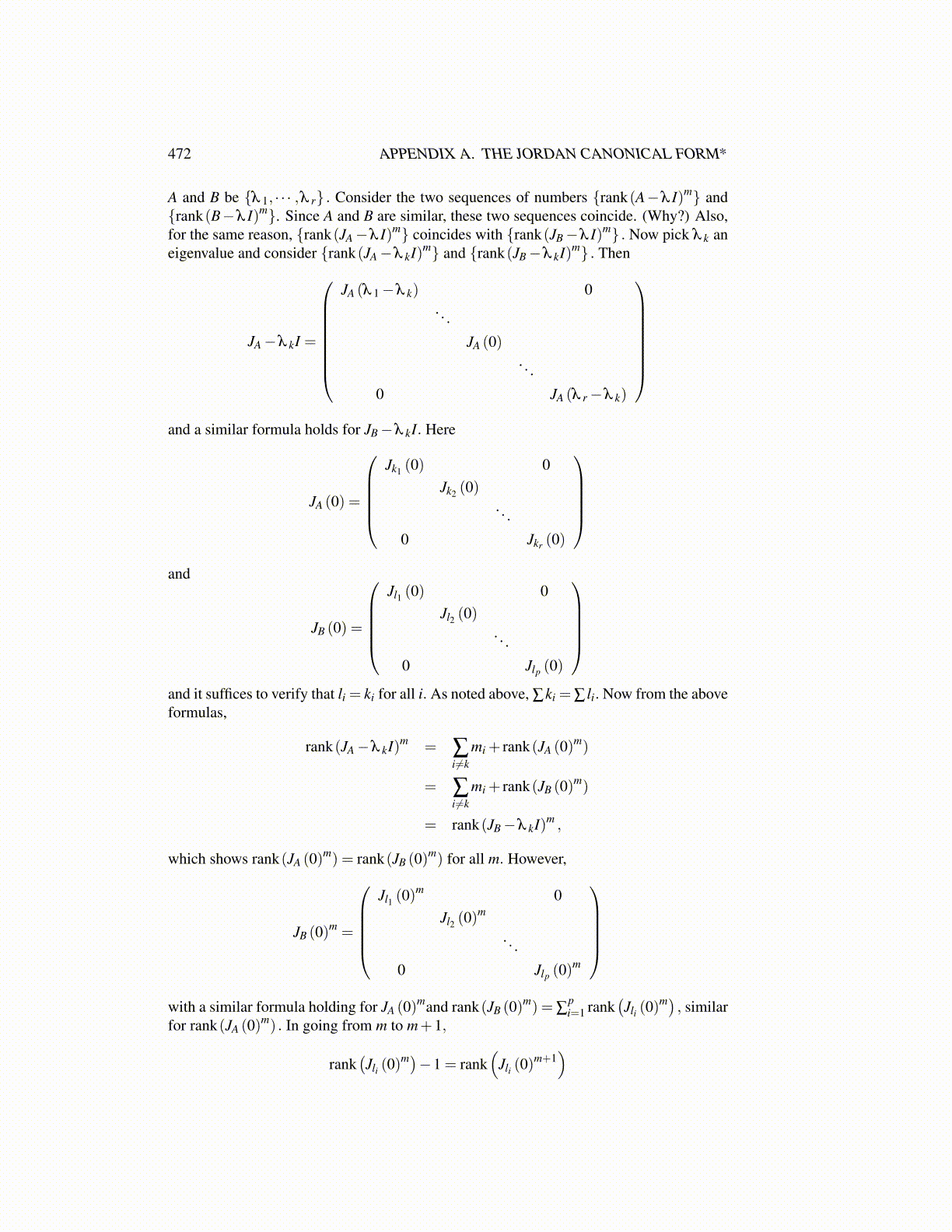
472 APPENDIX A. THE JORDAN CANONICAL FORM*
A and B be {λ 1, · · · ,λ r} . Consider the two sequences of numbers {rank(A−λ I)m} and{rank(B−λ I)m}. Since A and B are similar, these two sequences coincide. (Why?) Also,for the same reason, {rank(JA−λ I)m} coincides with {rank(JB−λ I)m} . Now pick λ k aneigenvalue and consider {rank(JA−λ kI)m} and {rank(JB−λ kI)m} . Then
JA−λ kI =
JA (λ 1−λ k) 0. . .
JA (0). . .
0 JA (λ r−λ k)
and a similar formula holds for JB−λ kI. Here
JA (0) =
Jk1 (0) 0
Jk2 (0). . .
0 Jkr (0)
and
JB (0) =
Jl1 (0) 0
Jl2 (0). . .
0 Jlp (0)
and it suffices to verify that li = ki for all i. As noted above, ∑ki = ∑ li. Now from the aboveformulas,
rank(JA−λ kI)m = ∑i̸=k
mi + rank(JA (0)m)
= ∑i̸=k
mi + rank(JB (0)m)
= rank(JB−λ kI)m ,
which shows rank(JA (0)m) = rank(JB (0)
m) for all m. However,
JB (0)m =
Jl1 (0)
m 0Jl2 (0)
m
. . .
0 Jlp (0)m
with a similar formula holding for JA (0)
mand rank(JB (0)m) = ∑
pi=1 rank
(Jli (0)
m) , similarfor rank(JA (0)
m) . In going from m to m+1,
rank(Jli (0)
m)−1 = rank(
Jli (0)m+1)